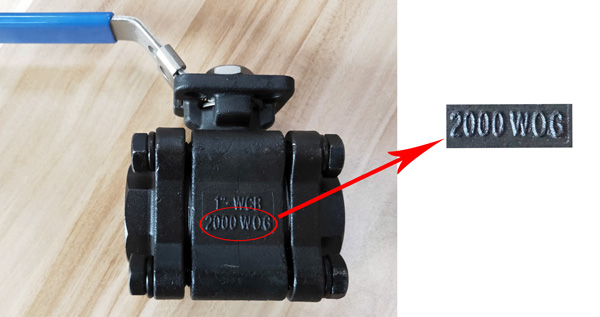PSI and PSIG Explained: Pressure Units, Differences, and Conversions
What is PSI?
PSI (Pounds per Square Inch) measures pressure by calculating force (pounds) applied to one square inch of area. Primarily used in hydraulic systems, tire pressure, and industrial equipment, it’s the standard imperial pressure unit.
Note: PSI may also refer to finance (Initial Coin Offering) or medicine (Postpartum Stress Inventory), but this guide focuses on engineering contexts.

PSI as a Pressure Unit
Definition
PSI quantifies pressure when 1 lb of force acts on a 1 in² surface. It’s dominant in the US/UK for engineering applications.
Key Conversions
| PSI | kPa | bar | MPa |
|---|---|---|---|
| 1 PSI | 6.895 | 0.0689 | 0.00689 |
| 1 atm | 101.3 | 1.013 | 0.1013 |
| Equivalents | 1 atm ≈ 14.696 PSI | 1 MPa ≈ 145 PSI |
Real-World Example
- A 1000 WOG Ball Valve: It means 1000 PSI ball valve = 68.95 bar or 6.895 MPa
- A 2000 WOG Ball Valve: It means 2000 PSI ball valve = 137.9 bar or 13.79 MPa

What is PSIG?
PSIG Definition
PSIG (Pounds per Square Inch Gauge) measures gauge pressure—pressure relative to atmospheric pressure. It’s the value displayed on most pressure gauges.
PSI vs PSIG: Core Differences
| Term | Type | Reference Point | Formula |
|---|---|---|---|
| PSI | Context-dependent | Varies (often = PSIG) | Generic unit |
| PSIG | Gauge pressure | Local atmospheric pressure | PSIG = PSIA – 14.7 |
| PSIA | Absolute pressure | Absolute vacuum | PSIA = PSIG + 14.7 |
Practical Examples
A tire labeled “35 PSI” = 35 PSIG (gauge pressure).
A vacuum at sea level reads -14.7 PSIG (PSIA = 0).
PSI vs PSIG: Key Applications
Industrial Use Cases
PSIG: Used in pressure gauges, compressors, and hydraulic systems (e.g., measuring tire pressure or pipeline pressure).
PSIA: Critical in aerospace/vacuum systems where absolute pressure matters.
Technical Clarifications
Documents often abbreviate PSIG as “PSI,” but strict contexts require distinction (e.g., aircraft specs list “18 PSI” but mean 18 PSIG).
Rule of thumb: Most industrial “PSI” readings are actually PSIG.
Comprehensive PSI Conversion Tables
Pressure Unit Conversions
| Unit | PSI | bar | MPa |
|---|---|---|---|
| 1 PSI | 1 | 0.0689 | 0.00689 |
| 1 bar | 14.5 | 1 | 0.1 |
| 1 MPa | 145 | 10 | 1 |
Other Key Conversions
1 PSI = 0.0703 kg/cm²
1 kg/cm² = 14.21 PSI
1 atm = 14.696 PSI = 101.3 kPa = 760 mmHg
FAQs: PSI and PSIG
Q: Is PSI the same as PSIG?
A: In practice, “PSI” often implies PSIG (gauge pressure). Technically, PSI is ambiguous, while PSIG explicitly references atmospheric pressure.
Q: Why do valves use PSI ratings?
A: PSI indicates maximum pressure tolerance (*e.g., 1000 PSI valve = 68.95 bar*).
Q: When should I use PSIA vs PSIG?
A: Use PSIG for equipment pressure readings; PSIA for vacuum systems or scientific calculations.
Key Takeaways
1. PSI = force per square inch; PSIG = PSI relative to atmospheric pressure.
2. Most industrial “PSI” values are PSIG (e.g., tire pressure, valve ratings).
3. Critical conversions: 1 PSI = 0.0689 bar, 1 MPa = 145 PSI.
Post time: Jun-24-2025






